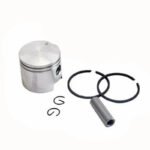
Introduction
Maintaining agricultural machinery is essential for ensuring productivity and efficiency, especially for plantation managers, tea estate owners, and rubber plantation operators. One of the most critical aspects of machinery maintenance is proper lubrication. The right lubricants not only enhance machinery performance but also reduce downtime and extend the lifespan of equipment. In this guide, we’ll explore the top 5 lubricants for agricultural machinery and provide practical tips for their application, tailored for the unique needs of plantations.
Why Lubrication is Essential for Agricultural Machinery
Agricultural machinery faces intense workloads, often in challenging conditions. Here’s why lubrication is a non-negotiable aspect of maintenance:
- Reduces Friction: Prevents wear and tear on moving parts, ensuring smooth operation.
- Prevents Corrosion: Protects machinery components from rust and environmental damage.
- Enhances Efficiency: Keeps machines running at optimal performance levels.
- Lowers Maintenance Costs: Minimizes the need for frequent repairs or replacements.
- Improves Longevity: Extends the lifespan of expensive machinery investments.
Plantation environments, particularly in tea and rubber industries, require meticulous care due to the high moisture and varying loads these machines endure.
Types of Lubricants for Agricultural Machinery
Understanding the different types of lubricants is crucial for effective machinery care. Here are the primary categories:
- Engine Oils: Essential for engines to reduce friction and provide thermal stability.
- Hydraulic Fluids: Maintain pressure in hydraulic systems and prevent wear.
- Greases: Thick lubricants for bearings, joints, and other high-load components.
- Transmission Oils: Ensure smooth operation of gear systems.
- Chain Lubricants: Designed for chains and sprockets, reducing wear and prolonging life.
Top 5 Lubricants for Agricultural Machinery
Here are the top lubricants that every plantation owner should consider:
1. Multi-Grade Engine Oil
- Benefits: Offers superior thermal stability and protects against extreme temperatures.
- Best For: Tractors and heavy-duty engines in tea and rubber plantations.
- Key Features: Multi-grade formulation ensures performance in both hot and cold climates.
2. High-Performance Hydraulic Fluid
- Benefits: Prevents rust, ensures smooth hydraulic operations, and resists thermal breakdown.
- Best For: Loaders, plows, and other hydraulic machinery.
- Key Features: Compatible with modern hydraulic systems and environmentally friendly.
3. Lithium-Based Grease
- Benefits: Long-lasting and resistant to water washout, making it ideal for wet environments.
- Best For: Bearings, axles, and high-load components exposed to moisture.
- Key Features: High adhesion to metal surfaces for lasting protection.
4. Synthetic Chain Lubricants
- Benefits: Reduces wear, minimizes residue buildup, and ensures smooth chain operation.
- Best For: Chains and sprockets in pruning and cutting tools like brush cutters.
- Key Features: High penetration and long-lasting lubrication properties.
5. Gear and Transmission Oil
- Benefits: Provides excellent shock-load resistance and smooth gear transitions.
- Best For: Tractors, harvesters, and rubber processing machinery.
- Key Features: High viscosity index for consistent performance.
Application Methods and Best Practices
To maximize the benefits of lubricants, follow these best practices:
Preparation
- Clean the machinery thoroughly to remove dirt, debris, and old lubricant residues.
- Inspect components for signs of damage before applying lubricants.
Correct Application
- Use the appropriate type and amount of lubricant for each component.
- Apply lubricants evenly to ensure complete coverage.
Frequency
- Establish a lubrication schedule based on machinery usage and manufacturer recommendations.
- Monitor components regularly for signs of insufficient lubrication.
Storage
- Store lubricants in a cool, dry place away from direct sunlight.
- Keep containers sealed to prevent contamination.
Safety Tips
- Wear protective gloves and eyewear when handling lubricants.
- Dispose of used lubricants responsibly to avoid environmental harm.
Choosing the Right Lubricant for Your Needs
Selecting the right lubricant depends on several factors:
- Machine Type: Consider the specific requirements of tractors, loaders, or cutting tools.
- Climate: Choose lubricants that can withstand the temperature and humidity conditions of your plantation.
- Workload: Heavy-duty machinery may require specialized high-performance lubricants.
- Manufacturer Recommendations: Always refer to user manuals for guidance.
Lakparts.com offers a wide range of high-quality lubricants tailored to the needs of tea and rubber plantations. Explore our products to find the perfect fit for your machinery.
Conclusion
Proper lubrication is the cornerstone of agricultural machinery maintenance. By using the right lubricants and following best practices, you can enhance efficiency, reduce downtime, and prolong the life of your equipment. Plantation managers, tea estate owners, and farmers can rely on Lakparts.com for expert advice and premium products to meet their maintenance needs.
Visit Lakparts.com today to discover the best lubricants for your agricultural machinery and take your plantation’s productivity to the next level!




